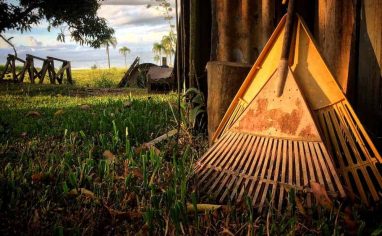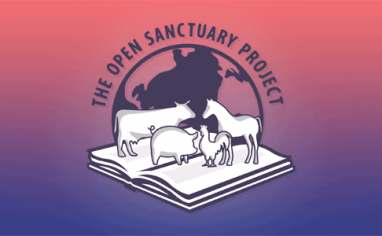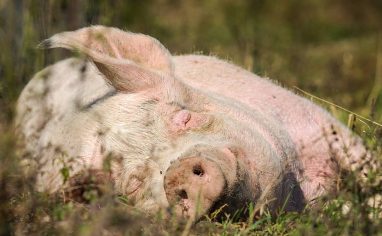
Subscribe To The Open Sanctuary Podcast
If you’d like to get the latest episodes of The Open Sanctuary Podcast, you can subscribe for free on all Podcast platforms, including Apple Podcasts and Spotify!
Episode Notes
Executive DirectorThe individual formally in charge of final decision making at an organization, who sometimes works closely with the organization’s Board of Directors. Sometimes a Founder is an Executive Director, especially early in a nonprofit’s growth stages. Mckenzee Griffler and NonprofitA non-governmental organization whose primary purpose is something other than selling goods or services. Specialist Julia discuss some of the issues that can make fundraising an emotional challenge for those who come from a caregiverSomeone who provides daily care, specifically for animal residents at an animal sanctuary, shelter, or rescue. background. We also talk about the intersections between fundraising, capacity and storytelling, how to find a balance between these elements, and how we can bring some “fun” into fundraising.
—
This Episode’s Referenced Open Sanctuary Project Resources:
Determining Your Animal Sanctuary’s Capacity For Responsible Care
Estimating Species Lifetime Care Costs At Your Animal Sanctuary
How To Raise Money For Your Animal Sanctuary
How To Develop A Fundraising Plan For Your Animal Sanctuary
Cultivating Resilience At Your Animal Organization In The Face Of Inflation
Fostering Positive Relationships Between Animal Sanctuaries
Year-End Fundraising For Your Animal Organization
A Complete Guide To Major Donor Fundraising At Your Animal Sanctuary
Episode Transcript (Auto-GeneratedThe following content was transcribed through an automated process and may contain transcription errors or misspellings.)
Julia Magnus: Welcome sanctuary friends, followers, rescuers. We are really excited to join you again today with another episode of the Open Sanctuary podcast. And today we are talking fundraising. This is a huge subject, so we’re only going to scratch the surface today and kind of address some of the initial issues that you might encounter when it comes to fundraising. It’s kind of a question that’s fraught for a lot of people. There are a lot of stressful aspects involved for a lot of people psychologically. I think maybe that’s because a lot of people involved in sanctuary work are caregivers. And so when we ask for help for ourselves, that’s often a challenge. So, in this episode, we’re going to offer you our initial thoughts on this, perspectives, experiences, and try and point you to some of the resources we have on our site that were drafted by experts in the fundraising field that we have been fortunate to work with. I’m here with Mckenzee Griffler, who is the executive director of the Open Sanctuary Project. I’m Julia Magnus, the nonprofit specialist. This is a big one. Yes, it is.
Mckenzee Griffler: Julia, I think we can start at maybe the most basic question, which might seem very basic, but I think it makes sense to get everyone on the same page, which is why does an animal organization need to fundraise?
Julia Magnus: It’s not necessarily a requirement. There are many people and organizations that can operate fully without asking for external fundraising. There’s a lot of different kinds of organizations that exist and there are plenty of people who rescue animals, care for them in their own homes, who do so without asking for external help. I think one really important site and source to look at in this context would be the Micro Sanctuary Resource Center. This is an organization that promotes and supports the concept of micro sanctuary, which is essentially, you know, when ethical vegansIndividuals who seek to eliminate the exploitation of and cruelty to nonhuman animals as much as possible, including the abstention from elements of animal exploitation in non-food instances when possible and practicable as well. live with a smaller number of animals and they do so with those animals. Clearly they’re their companions. They are not there for any reason other than companionship. They are cared for as family members. In a lot of those contexts, and this is how I live myself, I live in a micro sanctuary environment. I don’t rely on external fundraising for the care of my animals. So you don’t necessarily need to fundraise. But sometimes when you’re seeing outside of that realm, if you have larger populations, if you’re an organization that has already taken on a lot of animals and you’re recognizing that you may not be able to support that population without some external help, fundraising may become an important aspect of your operations.
Mckenzee Griffler: Well, that and if you’re a 501c3 organization, right?
Julia Magnus: Yeah, I mean, 501c3 organizations, most people tend to start them because they do think that will be an easier way to get public support, specifically fundraising. And that may or may not be true. We do have a resource on the cost and benefits of 501c3 status. In general, if you’re a 501c3, you will need to illustrate a certain level of public support to justify your ongoing nonprofit status. But it is not the only path, I want to stress that, you have to go down if you want to rescue or care for animals.
Mckenzee Griffler: Yeah. What are some opportunities of getting into more of a fundraising mindset?
Julia Magnus: It is fundamentally an invitation to others to become stakeholders and supporters of your mission and vision. It is a way to expand your reach, your impact, to get people invested. It’s a chance to spread narratives. It’s a chance to really kind of get your message out there. It’s one thing to be an organization that’s completely self-sustaining and small like mine is. And I talk to people in the neighborhood and stuff about that, but it would be another entirely to share with the entire city what it’s like to have a micro sanctuary in Chicago and to ask for support in sharing that vision with others. You know, it’s not just asking for help, but it’s sharing a vision at the same time and also involving folks in a way that they feel they have a personal stake in it.
Mckenzee Griffler: I think that makes a lot of sense. It’s really inviting people into the story of the community that you’re building through sanctuary.
Julia Magnus: And it’s getting people to really show their support in a very tangible way because for many people what’s more tangible than their hard-earned money to show their support to you, to show that this is the way that they want to help contribute to a life where the residents in your organization’s care and those like them can live the best lives possible. So, you know, in those senses, I can really see that part where really getting into a fundraising mindset is inviting more people to get involved in the way that they can.
Mckenzee Griffler: But why is it so hard? And you know, as an executive director of a 501c3 organization, this is something that I really had to work through. But why is it so hard for individuals who operate sanctuaries and animal organizations to get into a fundraising mindset and to ask for that money?
Julia Magnus: I mean, I really think that for many caregivers, our nature is so fundamentally oriented around giving care to others that it can become such a part of our identity that it almost feels like somehow you’re selling yourself out when you ask for help. It’s painful in a certain way. It’s hard. It’s just hard to ask for help. It feels contradictory to who you are. And I do think there are also many of us who are aware of other folks in our community who are also doing similar or adjacent work who also need assistance, who also need help. We don’t want to necessarily compete with them or take funds away from them. And I do think that’s a function of a general notion of scarcity that pervades a lot of people who work in the giving fields that there’s just a limited amount of funds, there’s a limited amount of stuff resources that we can get, and if somebody gets something then somebody else doesn’t, and so that can feel very intimidating and sad and maybe sometimes it can feel competitive and that’s scary too.
Mckenzee Griffler: Mhm. Yeah. And I imagine that there’s also a sense of impostor syndrome that can come in, this idea that it’s like, oh, is my organization really doing everything it needs and does it deserve this external support that other organizations we might perceive to be doing a better job or in more dire need of the funding?
Julia Magnus: Yeah, I totally agree. And I remember one thing that you were very early on when I started working at OSP, you were talking about the overhead myth. I mean, maybe you want to speak to that as well because I think that’s something that nonprofitsNon-governmental organizations whose primary purpose is something other than selling goods or services. cope with a great deal. And I think particularly in your role as an ED, you probably have seen that and heard that from other EDs.
Mckenzee Griffler: Oh, yeah. And the overhead myth, I think we could do an entire podcast about the overhead myth from a sanctuary perspective, but it’s this pervasive idea that an organization, any nonprofit organization, all of the funding has to be in the program. All the funding has to be devoted to, well, in a sanctuary’s case, probably the care and rescue of animals. And everything else beyond that is a luxury or an extra. And it’s bad to have needs for funding in these other categories like to pay staff and pay volunteers, if volunteers need to be paid, or just to improve the lives of caregivers or even other support staff because sanctuaries aren’t just caregivers. Sanctuaries are also, you know, social media people, they’re outreachAn activity or campaign to share information with the public or a specific group. Typically used in reference to an organization’s efforts to share their mission. people, they’re educators. These are all really important roles, especially as sanctuaries, if they choose to grow in that way and expand their mission, it’s really important to get people that can do these jobs and to pay them equitably. So, I think there is this sense that if a sanctuary isn’t pouring every single dollar into rescue or into direct care that they are wasting that money. But I think that’s where it gets really important to figure out what is the mission of your organization and really make sure that your funding is serving that mission. We did an earlier episode about mission and vision and why it’s so important to get clear about those things because that can really help guide how you want to distribute your funding. And it’s very quick when you realize that if you want full-time caregivers or people in these other roles to be helping your organization expand its impact and expand its mission, even if it’s just caregivers, like caregivers also deserve to live well and be able to not just survive but thrive. You know, just like as we say with enrichment for residents, even if you want to take a cynical view about it and say that like, oh, you know, I just want to reduce turnover, I just want caregivers to stay with us, that’s also important from a funding perspective because training new caregivers all the time is going to be taking away from your mission versus having knowledgeable people that feel like they can grow with your organization and be taken care of and not necessarily burn out or have to leave the organization due to feeling a lack of support or a lack of being cared for by the organization. So, it’s really important for sanctuaries, if you haven’t read about the overhead myth, to learn a little bit about it. But that’s all to say that it makes sense that you might be feeling like, “Oh, well, you know, we’re covering our residents and therefore it would be immoral or wrong for us to ask for additional support beyond that, especially if your organization is working on a mission that is beyond solely the care of those residents in your care.” And I mean, you know, even if you step away from the overhead myth and we’re just talking about just creating a safe budget and a cushion for residents. It’s important to realize that the lifelong care, compassionate care of residents is not cheap and it’s okay to ask for help. We talk about capacity being such an important thing to think about as any kind of sanctuary, be it whatever organization, species mix, size that you want to look at, like you have to be able to think about how you’re going to be providing lifelong care, long veterinary care, enrichment care, and all of these things will add up over time. And so, just, you know, you don’t want to necessarily be caught in a mindset of just being okay for this week or okay for next week. It’s important for the residents that you’ve given this promise of care to to figure out a way that they’re going to be reasonably cared for at this time. And that can be really challenging if you’re not thinking about how you’re going to make that possible for them, if you’re in an organizational format that is not just solely relying on your own funds, which is also fine as Julia was saying with a micro sanctuary model or with like a private foundation model, but all of these things need to be considered when you’re thinking about your budget for the year and then your budget for the next few years. And then from there, you know, you really have to think about where that money is going to come from. And for probably most of the organizations listening to this podcast or people interested, it’s going to have to partially come from external channels.
Julia Magnus: I feel like it’s really important that you drew in the discussion of capacity with regard to fundraising. I think there’s an important balance to strike when you’re considering fundraising capacity. First of all, you want to make sure your capacity remains within the reach of your fundraising ability, but you also want to feel comfortable that it’s okay to ask for help when something might happen that might stretch your capacity a little bit further. And narratives are really important in that context. I think there are a couple of things that popped into my head as you were talking. I was thinking first of all about organizations that rely heavily on rescue narratives when it comes to fundraising. We found this beautiful creature who is in dire need of help and we need your help to get them vet care, to get them safely, to get them a shelter, to get them all the things that they need. Well, you know, those are very compelling stories from a fundraising lens, but from a capacity lens, if you rely solely on that kind of narrative sharing to fundraise, that might cause you some problems in the long run because there’s also the question of there is Mrs. Senior cowWhile "cow" can be defined to refer exclusively to female cattle, at The Open Sanctuary Project we refer to domesticated cattle of all ages and sexes as "cows." who is at our sanctuary and she is experiencing some challenges that come with being an older cow. She might have arthritis. She might have certain issues and I think people are afraid that those narratives maybe aren’t as compelling as potentially the rescue stories that they might not be as effective as fundraising. But you might be surprised. And I think that one thing to be cognizant of is always when you’re sharing narratives and asking for help, it’s nice to always try and strike a balance between the two kinds of stories, like the ongoing care, the ongoing lifelong needs of existing residents with those of new rescues. And building off of that, I think there’s a great opportunity there to educate the public while also using an opportunity for expanded support in the future from the public to say like, look, these residents as they get older, as they receive the care that a beloved dog or cat companion might rightfully deserve. These are real expenses. They aren’t luxuries. This is just what they deserve as individuals. And I think it can be really powerful to flip the narrative in that way and be like, yeah, the reason why we’re doing this is because they deserve this care as a baseline and other individuals like them out in the world deserve this care as a baseline. So, I think it can be really powerful for organizations to look more at that long-term care as an opportunity to gain extra support and also at the same time just demonstrate the level of care that they’re putting in as an organization which can also build trust and demonstrate transparency to the public especially if they’re a 501c3 nonprofit. Not that a C3 is required to be like a fully public, open everything we do goes on social media organization. There’s definitely reasons why certain things are shared and certain things aren’t with context. And we have a full resource on transparency and accountability at your sanctuary that goes into this topic. But I think showing the daily care that caregivers are giving residents, showing the stories of content residents that are receiving this lifelong care as they get older. I think that’s really important as well because we’re talking about farmed animalsA species or specific breed of animal that is raised by humans for the use of their bodies or what comes from their bodies., farmed animal sanctuariesAnimal sanctuaries that primarily care for rescued animals that were farmed by humans.. A lot of these residents, they’ve never been seen by many people as older residents, even like adult residents, forget elderly. And a lot of the time it’s cutting edge for the veterinarians that are working with them to even see residents, even to see like a cow that’s like 8 years old, you know, which isn’t anywhere close to like what their lifespan can be. But I think these narratives can be very powerful. And so I think in that sense it’s a really good opportunity to step away from the idea that all fundraising needs to be from these emergency scenarios. Not to say that rescue isn’t important. Rescue is obviously very important. And there’s other opportunities that we can tell stories that demonstrate the value of the lives of residents and sanctuaries of all kinds. I feel it’s really critically important that folks make an effort to strike that balance between the rescue narrative and the long-term care narrative as one way to demonstrate how we’re working towards responsible, sustainable capacity in sanctuaries that we’re working towards providing fully compassionate lifelong care that’s really thoughtful and careful. And I’m kind of hesitant to mention this, but I kind of feel like a need to when we’re talking about narratives. There’s something that I see from time to time and it kind of always stresses me out a bit and it’s not just from animal organizations, it’s from any organization like Wikipedia. You can go to Wikipedia and they’re like, “Ah, give us $2 now,” you know, “or we will close.” You’ll get these kinds of pleas at times with fundraising that are like, “If you do not donate now, everyone will die,” and it’s like, oh, that’s not great. It’s in stark contrast to what you and I were just talking about which is the nice balance between the rescue story, talking about lifelong compassionate care, and telling the narratives of senior animals. It’s like, “We will not have food for our residents if you do not donate now.” And those kinds of pleas are hard for both, they’re hard probably to put out as an organization and they’re also hard for donors to look at, and they are the kinds of things that if they’re repeatedly made, may make somebody question the capacity of your organization, may make you suspect from an accuracy and transparency lens. You know, donors have compassion fatigueA form of Secondary Traumatic Stress Disorder that can affect anyone serving individuals who have experienced or are currently experiencing trauma. too. And so it’s a challenge too because there may be legitimate emergency situations where you may need to share narratives that might not be dissimilar from that. But if you’re doing it every week, I don’t know, you know, I would consider rethinking some things maybe.
Mckenzee Griffler: Well, and that’s a really challenging point because obviously there are situations that an organization might be facing a significant shortfall. One thing that listeners might be keenly aware of or if you’re new to sanctuary you might not know is that the price of hay and straw is astronomically higher than it was a few years ago. So even an organization that might have been budgeting with a pretty healthy margin for hay and straw, which is critical for many organizations, might suddenly see that that budgetary line item is now stretched extremely thin. And of course, veterinary emergencies happen every day. And when you’re talking about farmed animals, you don’t really get a say in necessarily shopping around to find a different vet. So, you know, you might have an idyllic pasture for horse residents and then a horse steps on something weird and then suddenly you’re looking at a $30,000 vet bill. We don’t want to say that you’re a bad organization for needing to fundraise in a critical time. I think what we’re really trying to say here is that these are all important factors when considering long-term capacity and figuring out what you can reasonably ask from the community and how you can get to a place of budgetary stability so that you don’t necessarily feel quite as inclined or like it’s necessary to make these dire emergency asks on a frequent basis. And every organization that we serve, every sanctuary that we serve, and every rescue that we serve, which is hundreds of organizations around the world, they all face these challenges. I think that’s something that I really want to underline. I don’t want to make it sound like some organizations are like the “quote unquote” bad organizations or that you should feel terrible about this. Running a sanctuary is hard. I don’t care what your budget is. I don’t care how much staff you have. I don’t care how many residents you have. It is hard, grueling, often thankless work. So, what we’re hoping is that we can help steer all organizations towards a more sustainable future that feels less stressful. We’re certainly not saying that if you’re not doing these things right now, you’re one of the bad organizations. We don’t think any organization is one of the bad organizations. I’m so glad you pointed out the hay thing because when I look in community chats, it’s not just the hay thing. Everyone’s facing challenges. Everyone’s going through this. Totally agree with you, Mckenzee. No one’s bad for struggling with inflation, with hay prices. I mean, I have a limited number of chicken residents, like the cost of chicken food went up substantially and I’m like, what is, wow, okay? It’s a challenge for all of us and so this is why we exist. We’re here to create different resources that can potentially help support you from everything from inflation to resources that we created on the impacts of COVID which I think a lot of folks are still feeling today, there are resources on our site that you might be able to find helpful. We’re going to list all of those in the show notes. We’ve got resources on capacity, responsible rescue, species, lifelong care costs, raising money, and we do have in-depth resources on detailed aspects of fundraising which include grant programs, major donor fundraising, etc.. And even something fun like an infographic that you could print out, you can just stick it next to your computer and try and get inspired because let me just say one thing. You know, when we started working on fundraising in recognition of the fact that it’s kind of a stressful subject, you know, no one on staff is necessarily the key expert on this subject. We started working with a fundraising professional who had some really interesting insights for us on this. From my lens, I always see people kind of feeling defeated before they even start and they just assume people know that they need donations and that they’re just not getting them. And so working with this fundraising professional was really cool. And I remember editing one of her resources and I think I was working on the introduction and I put some sentence in along the lines of fundraising is always a challenge. And she came right back and was like, “I would prefer not to say that because it doesn’t feel right to me. It isn’t always a challenge, but it’s an opportunity.” This is kind of circling back to what we were talking about earlier. You know that this is a chance to connect with your community. This is a chance to invite people to be part of your mission and vision to give people a stake in your work to give them a greater opportunity for understanding what your challenges are and being there to support you. It’s an opportunity to connect. And when Chrissy said this to me, I was like, “Wow, you know, that’s pretty deep.” And this is a really good way to rethink about this matter. So, I’m going to say something really corny.
Julia Magnus: Go for it. You got to do it. I got to do it. You can’t spell fundraising without fun. Oh, she really said it. I did it. That’s embarrassing. I shall live in me forever for having said that.
Mckenzee Griffler: Mhm.
Julia Magnus: But I mean, we’ve worked on this together, too, Mckenzee. Even within the context of OSP, we’ve found some ways to make fundraising…
Mckenzee Griffler: Mhm. Yeah, absolutely. I think there’s a lot of different ways that animal organizations can fundraise that might not immediately come to mind in terms of asking for support. We have a very detailed resource called “How to Raise Money for Your Animal Sanctuary” that is probably due for another overhaul, but it is a 21-minute article if you believe the little article estimator. And it has so many different opportunities and dare I say it, fun ways that an animal sanctuary or an animal rescue can work on raising money. Yeah, there are a ton of different options within that resource. I mean, open a thrift store, in-kind donations. You can have Amazon wish lists. You can have events of all different types. Donation jars you can distribute throughout your community. These are kind of basic things, but there are other ways too. You can have a merch store. You could do resident calendars. Resident calendars. You can use sponsorships and then folks who decide to sponsor a particular resident, they get a monthly update on that resident. And that’s really also another great way to share your mission and visions, share the narratives of your residents, and kind of promote the kind of compassionate care that your organization gives. You could do an art show. Art shows are fun. To do a poetry night.
Julia Magnus: Poetry night, why not? You know, like I’m excited because we just launched our own merch store here and it’s really cool and I’m excited to get the shirts and like the designs. People like art. Art is fun. Most of the people who care about animals, in my experience, also tend to like art and they like animal art. You can work with artists in your communities to have auctions online or do them locally. Could do a bake sale. Bake sales. I mean, who doesn’t like cupcakes?
Mckenzee Griffler: Or like a craft sale. You could even do like a fun run, you know, get the more sporty inclined people. There’s just a lot of different ways that you can get the community interested or more engaged or more willing to give. But I think it goes back to something that you said earlier, which is a lot of organizations tend to have the assumption that people know that they need money, that they would like additional funding, and then they feel discouraged when people don’t give them that funding that they haven’t asked for. So the most important thing if you’re going to take anything away from this introductory podcast on this subject matter is if you don’t ask for money, it’s not very likely that you’re going to see the funding that you might be hoping for or even needing. So the first thing that you have to do, and believe me, I know as an executive director of an animal organization that’s been around for 7 years, I used to be very bad at asking for money. I used to be so bad at it because of many of the reasons that we listed earlier. Like it was a matter of impostor syndrome, especially when we were like a new organization. It was like a sense of like, oh, you know, we’re not like, we’re not an animal sanctuary, so like, how dare we ask the community for support? And especially since our resources are for you, the sanctuary and rescue community. It can feel a little stressful to be like, well, they need as much funding as they can get, which is true. And also, we are an organization that provides hundreds of free resources for animal sanctuaries. So, if we want to continue to do our mission to make the lives of sanctuaries easier, I had to get better at saying, “Hey, you listening to this podcast, if you consider giving us five bucks, that would actually be great and we’d really appreciate it,” and that is a true ask if you want to go to opensanctuary.org/donation. But you know, you got to get better at it and you got to say, “Help us, help expand our impact, help us continue our programming, help become a partner in this mission that we have.” So that’s all to say that I’m not saying I’m coming from this place of like, “I know everything about fundraising,” but just to say I understand, especially as someone who’s inclined to be a helper, how hard it can be to ask for help, but it’s important to think about it really, as corny as it sounds, as an opportunity to get other people to feel good about helping you. Yeah. It feels so important, like it feels like we’ve kind of talked about the things that are in your head that could be holding you back from asking. And it’s important to just recognize that in yourself and acknowledge that these things are ingrained in you. They’re indoctrinated. They’re part of being part of the system. You can let that go. You can ask and you’ll be surprised if you do ask what happens sometimes. It’s okay to let that go and ask and then just welcome what comes to you. And don’t feel defeated before you begin. You know, don’t feel like this is going to be an insurmountable mountain that you will never attain the top of. You can get there. There is fun to be had in fundraising. Have to do it again. Uh-uh. Allow yourself to enjoy it and allow yourself to collaborate with members of your community that you might have a lot of fun working with that you might not otherwise get to work with. They may not be people who are into direct care. They may not be people who are willing to go and, you know, move hay bales or scoop poop, but they might be willing to make you a painting. And it’s an opportunity, I think Chrissy…
Julia Magnus: Chrissy was dead on with that. Like, look at it as an opportunity and you can always ask people if they know people. You know, you don’t have to necessarily say like, “Oh, well, if you can’t give me what I need, then forget it.” You can say, “Hey, could you connect me to somebody that might feel inspired to give and want to get involved with my organization?” One piece of wisdom that really changed the way I thought about fundraising, and Lord knows where it came from, but it was this feeling of like, rather than thinking about asking for money as a burden. Think about how people want to help. People generally, if they are in your circle and they know what you do, they want to be helpful to you. So give them an opportunity to feel good helping you and then thank them. That’s the other thing. You really have to thank people. Yeah, the gratitude is a really important part. I always feel it’s important to express anticipatory gratitude and as it happens gratitude and after the fact gratitude, like you can’t really ever thank people enough in my view.
Mckenzee Griffler: Well, thank you for saying that, Julia.
Julia Magnus: Well, on that note, we also have, there is, just keep in mind, side note, lawyer here, there is a resource on the legal requirements associated with donation acknowledgement letters that 501c3s must send out when they receive donations. That’s on our site. It’s way too long a subject to delve into here, but it’s there for you if you want it.
Mckenzee Griffler: Yeah. And there’s a whole resource that Julia put together recently about how sanctuaries can address inflation concerns. There’s all sorts of great resources on our website, opensanctuary.org. Many of them are in the show notes. And if you are listening to this and you’re like, “But what the heck about this though?” you should send us an email and if it’s not covered on our website, we’d probably be really happy to make a resource about it for you. So, always keep that in mind.
Julia Magnus: Yes, indeed. Feel free to reach out at any time. And thank you so much for being here with us. We hope this maybe eases a little bit of anxiety around fundraising, which is often a tricky subject for some, but not always and not necessarily. Thanks, Chrissy. Thanks to Chrissy for all she’s done to help us with those resources, too.
Mckenzee Griffler: Absolutely. And this is going to be the first of probably many conversations about fundraising and sustainability on this podcast, so stay tuned for more about that.

Got A Podcast Idea? Contact Us!
If you have a topic or question you’d love to hear our staff address on The Open Sanctuary Podcast, please get in touch via our contact form!








